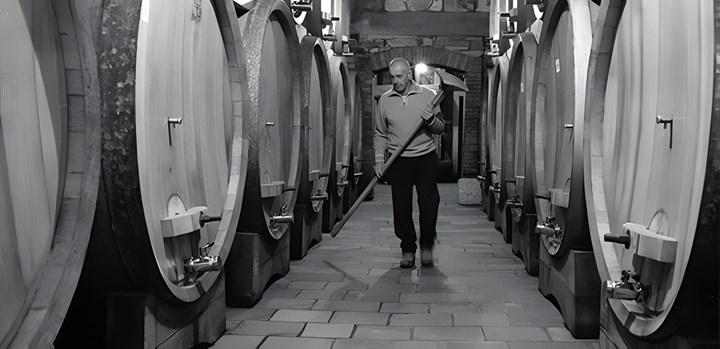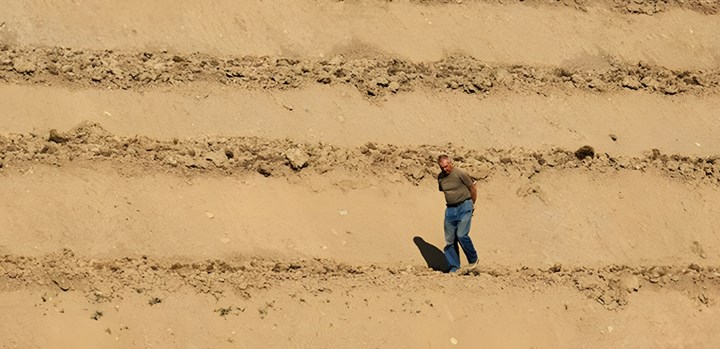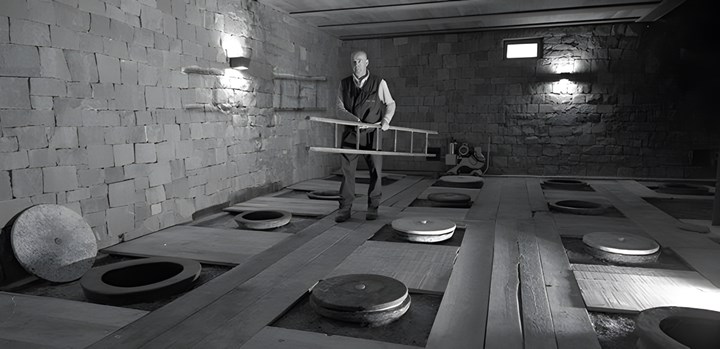
Which site would you like to visit?
By clicking the retail or wholesale site button and/or using rarewineco.com you are choosing to accept our use of cookies to provide you the best possible web experience.

From his estate less than a mile from the border with Slovenia, Josko Gravner is as one of Italian wine’s great individualists—an easy rival to Miani’s Enzo Pontoni and the late Edouardo Valentini.
And while he is seen as a radical, Gravner is at heart a traditionalist, mining ancient techniques in a quest for purity of expression.
Among these methods is vinifying in terracotta amphorae buried in the ground, which he learned about during travels to the Black Sea in the late 1990s. He found that the early methods still practiced there, including the use of amphorae, were not only the least manipulative, they yielded magical results, revealing the soul of terroir.

“Few can come close to the magic that is created in this vineyard and cellar.”
- Eric Guido
Yet, while he began to vinify his whites exclusively in amphorae in 2001, he continued to ferment and age his red wines in neutral wood. It wasn’t until the extraordinary 2006 growing season that he made the leap, fermenting his Rosso Breg in amphorae and then aging it in neutral Slavonian oak botti (à la traditional Barolo). These practices continue, with the release of the brilliant 2008 in the Fall of 2023.
Back Story
Josko is not only a traditionalist champion, he is also a restless perfectionist, reducing the number of grape varieties in his vineyards down to the two he believes most nobly express his terroirs. They are the indigenous white Ribolla Gialla and the red Pignolo, for the Rosso Breg.
Of the two, Pignolo is the more challenging, resulting in its near-extinction during the 20th century. Its tightly packed clusters are reflected in the name, derived from pigna, Italian for pine cone. Pignolo requires a well-ventilated hilltop site, which is sunny enough to bring it to full ripeness, but cool enough to avoid excess structure.
The thick skins make Pignolo a winemaking challenge, requiring great skill to refine what D’Agata calls its “Barolo on steroids” mouth-coating tannins. And the high level of polyphenols makes it very difficult to ferment. So, while Pignolo has seen a renaissance in recent decades, examples that capture its full potential for aromatic complexity and seductive texture have been few.
It was left to Josko Gravner to unlock the secret, transforming the perfectly ripe Pignolo from his sandstone-marl soil Hum vineyard, which for three centuries has been his family’s greatest red grape terroir. He whole-cluster ferments the fruit in beeswax-lined amphorae for six months, basket-pressed and returned to the vessel for a further half-years’ maceration.
Fourteen Years Aging
Since the 2006 vintage, he has aged Rosso Breg for an average of fourteen years before bottling during a waning moon. Through this patient approach, Gravner expresses the full measure of Pignolo’s inherent nobility from a great terroir, fantastically complex in aromas, flavors and minerality, and seductively silky in its texture.
While as traditional as winemaking gets in the 21st century, Gravner’s work continues to be viewed as radical because it represents such a sharp departure, not only from today’s conventional methods, but from his own history of using stainless steel and barrique.
And while he has inspired a legion of followers around the world ready to try their hand with terracotta, Gravner remains, in Antonio Galloni’s words, “in a league by himself.”

New discoveries, rare bottles of extraordinary provenance, limited time offers delivered to your inbox weekly. Be the first to know.
Please Wait
Adding to Cart.
...Loading...


By clicking the retail or wholesale site button and/or using rarewineco.com you are choosing to accept our use of cookies to provide you the best possible web experience.

